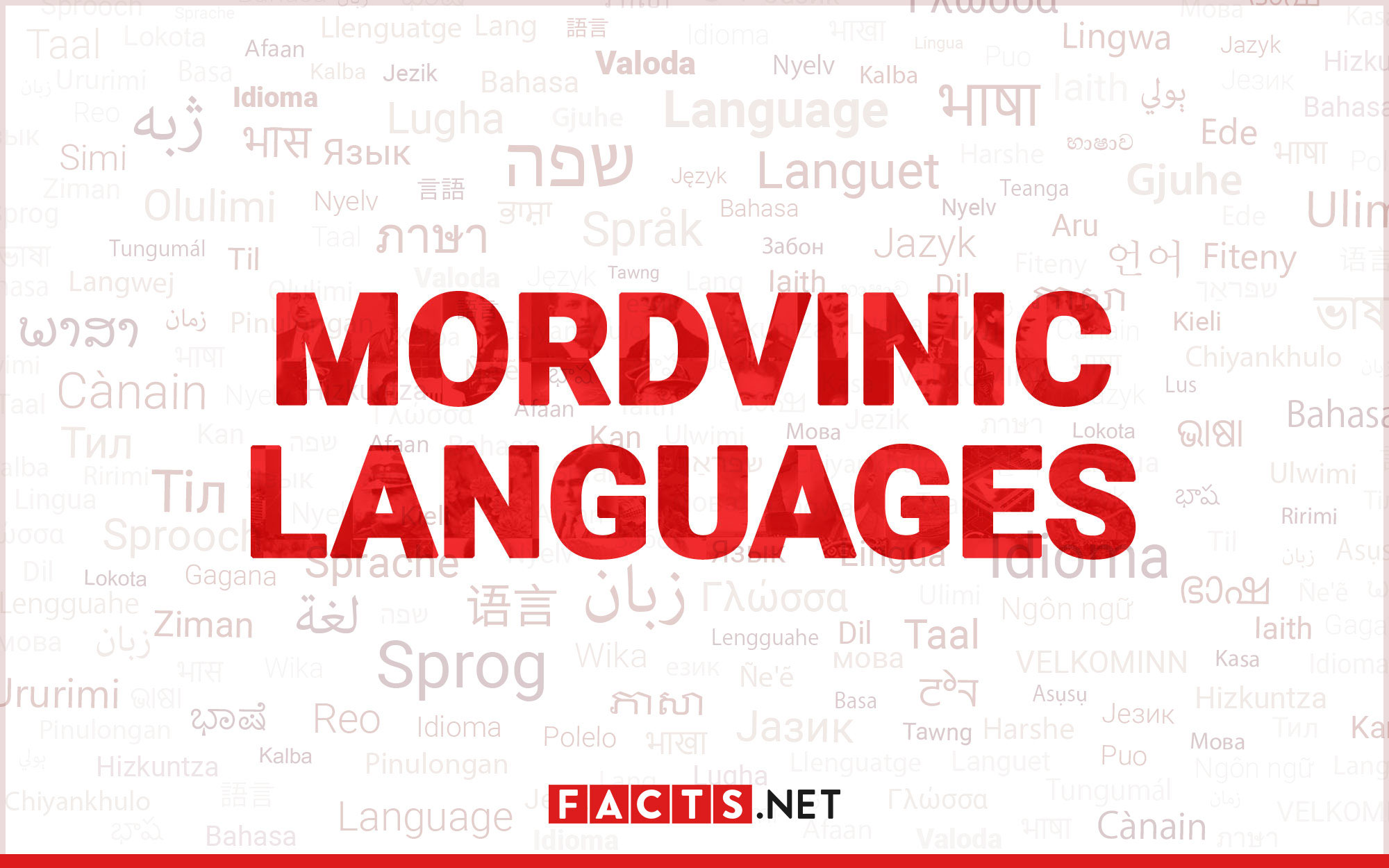
The Mordvinic languages, also known as the Mordvin languages, are a group of Finno-Ugric languages spoken primarily by the Mordvinic people in the Republic of Mordovia, Russia. These languages have a rich linguistic history and are considered to be endangered, as the number of speakers has been decreasing over the years. However, there are several surprising facts about the Mordvinic languages that often go unnoticed. From their unique grammatical features to their cultural significance, these languages have a lot to offer for linguists and language enthusiasts alike. In this article, we will explore 15 surprising facts about the Mordvinic languages, shedding light on their fascinating aspects and providing a deeper understanding of this lesser-known linguistic group.
Key Takeaways:
- Mordvinic languages, spoken by the Mordvinic people in Russia, are unique and complex, with a rich history and cultural significance, making them worth exploring for their linguistic and cultural richness.
- Despite being endangered, Mordvinic languages continue to evolve and adapt, promoting multilingualism and preserving indigenous knowledge, making them an important part of the global linguistic landscape.
Mordvinic Languages Have a Rich History
Mordvinic languages, also known as Mordvin languages, are a group of Finno-Ugric languages spoken by the Mordvinic people in Russia. They have a long and fascinating history, with roots that can be traced back over a thousand years.
There Are Two Main Varieties of Mordvinic Languages
The Mordvinic language family consists of two main varieties: Erzya and Moksha. Erzya is spoken by the Erzya people, while Moksha is spoken by the Moksha people. Both languages have their own unique characteristics and dialects.
Mordvinic Languages Have a Unique Writing System
One of the most interesting aspects of Mordvinic languages is their writing system. The languages were traditionally written using the Cyrillic alphabet, but a modified version known as the Mordvinic script was developed in the 19th century. This script incorporates additional characters to represent specific Mordvinic language sounds.
Mordvinic Languages Have a Complex Grammar
Mordvinic languages are known for their complex grammar systems. They have a rich system of noun declensions and verb conjugations, with multiple cases, tenses, and moods. The grammar of Mordvinic languages can be challenging to learn for non-native speakers.
Mordvinic Languages Have Influences From Other Languages
Over the centuries, Mordvinic languages have been influenced by other neighboring languages, including Russian and Tatar. This has resulted in the incorporation of loanwords and the adoption of certain grammatical features from these languages.
Mordvinic Languages Have a Small Number of Speakers
Unfortunately, Mordvinic languages are considered endangered as the number of native speakers continues to decline. It is estimated that there are around 500,000 speakers of both Erzya and Moksha combined.
Mordvinic Languages Are Part of the Finno-Ugric Language Family
The Mordvinic languages are part of the wider Finno-Ugric language family, which also includes other languages such as Finnish, Estonian, and Hungarian. These languages share certain linguistic features and are believed to have a common ancestral language.
Mordvinic Languages Have Cultural Significance
Mordvinic languages play a vital role in the cultural identity of the Mordvinic people. They are used in literature, songs, folklore, and religious ceremonies, preserving the rich cultural heritage of the community.
Mordvinic Languages Have Official Status
Both Erzya and Moksha languages have official status in the Mordovia Republic, an autonomous region within the Russian Federation. This recognition allows for the promotion and preservation of Mordvinic languages in education, media, and government institutions.
Mordvinic Languages Are Studied by Linguists
Mordvinic languages have attracted the attention of linguists and researchers who are interested in studying their unique linguistic features and their role in the broader Finno-Ugric language family. Linguistic research helps to deepen our understanding of these languages and their cultural significance.
Mordvinic Languages Have Online Resources
Despite being lesser-known languages, there are online resources available for learning and studying Mordvinic languages. Websites, dictionaries, and language courses provide opportunities for individuals to explore and engage with these fascinating languages.
Mordvinic Languages Preserve Indigenous Knowledge
Mordvinic languages are repositories of indigenous knowledge, including traditional practices, beliefs, and historical narratives. Preserving and revitalizing these languages is essential for safeguarding this valuable cultural heritage.
Mordvinic Languages Are Evolving
While facing challenges, Mordvinic languages continue to evolve and adapt to contemporary needs. Efforts are being made to develop modern vocabulary and introduce the languages in digital media platforms, ensuring their relevance in today’s world.
Mordvinic Languages Promote Multilingualism
As part of the larger linguistic landscape, Mordvinic languages contribute to the diversity of languages in the world. Promoting multilingualism and fostering appreciation for these lesser-known languages can lead to a more inclusive and interconnected global society.
Mordvinic Languages Are Worth Exploring
With their unique linguistic features, cultural significance, and ties to the Finno-Ugric language family, Mordvinic languages are truly worth exploring. Whether for academic purposes, cultural interest, or personal enrichment, delving into the world of Mordvinic languages can be a rewarding journey.
Conclusion
In conclusion, the Mordvinic languages are a fascinating linguistic group with a rich history and unique characteristics. From their distinct vocabulary to their intricate grammatical structures, these languages provide an intriguing insight into the diversity of human communication.
Throughout this article, we have explored 15 surprising facts about the Mordvinic languages. We have learned about their phonetic complexities, their connection to the Finno-Ugric language family, and the efforts being made to revitalize these endangered languages.
By understanding and appreciating the Mordvinic languages, we not only gain a deeper understanding of linguistic diversity but also contribute to the preservation of these languages and the cultures they represent.
FAQs
Q: How many speakers are there of Mordvinic languages?
A: The number of speakers of Mordvinic languages is estimated to be around 300,000. However, the languages are considered endangered, and efforts are being made to preserve and revitalize them.
Q: How many Mordvinic languages are there?
A: There are two main Mordvinic languages – Erzya and Moksha. Despite sharing many similarities, these languages also have distinct features and are considered separate languages within the Mordvinic language group.
Q: Are the Mordvinic languages written using a specific script?
A: Yes, both Erzya and Moksha have their own writing systems based on the Cyrillic script. These writing systems were developed in the early 20th century to standardize the orthography of the languages.
Q: Are the Mordvinic languages related to other language families?
A: Yes, the Mordvinic languages belong to the Finno-Ugric language family, which also includes languages like Finnish, Hungarian, and Estonian. This language family shares common ancestral roots and certain linguistic characteristics.
Q: Are there any efforts being made to preserve the Mordvinic languages?
A: Yes, various organizations and institutions are working to document, promote, and preserve the Mordvinic languages. Initiatives include creating educational resources, conducting linguistic research, and organizing cultural events to raise awareness about these languages.
Mordvinic languages offer fascinating insights into linguistic history and cultural heritage. For those interested in exploring other unique language families, consider learning about the enigmatic Uralic languages, such as Ingrian. Mapudungun, one of the captivating indigenous languages of South America, also deserves attention. Salishan languages showcase remarkable linguistic diversity, with their intricate grammatical structures and rich vocabularies. Delving into these lesser-known languages opens doors to new perspectives and deepens appreciation for the world's linguistic tapestry.
Was this page helpful?
Our commitment to delivering trustworthy and engaging content is at the heart of what we do. Each fact on our site is contributed by real users like you, bringing a wealth of diverse insights and information. To ensure the highest standards of accuracy and reliability, our dedicated editors meticulously review each submission. This process guarantees that the facts we share are not only fascinating but also credible. Trust in our commitment to quality and authenticity as you explore and learn with us.


